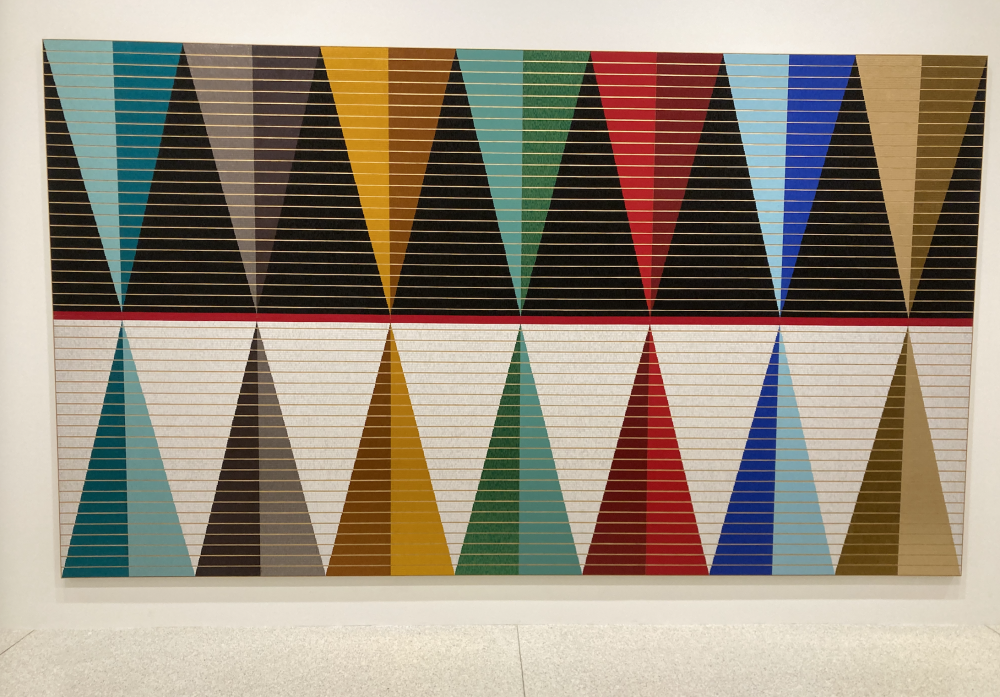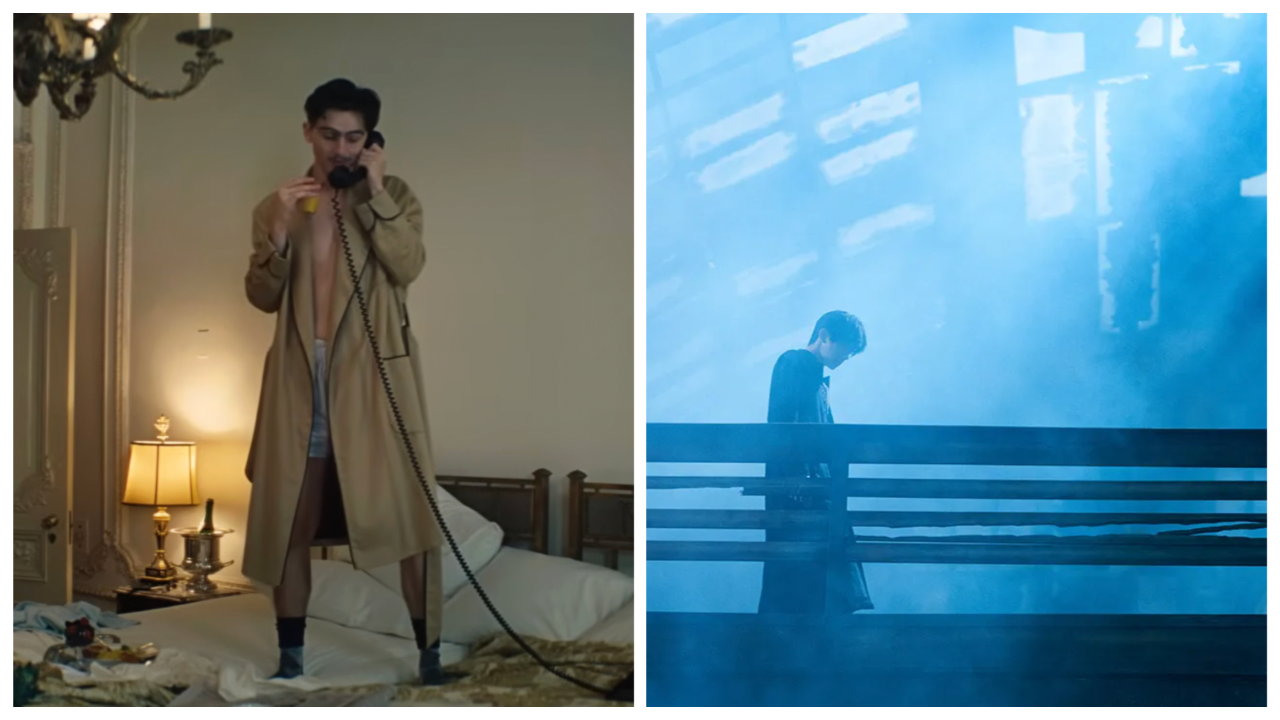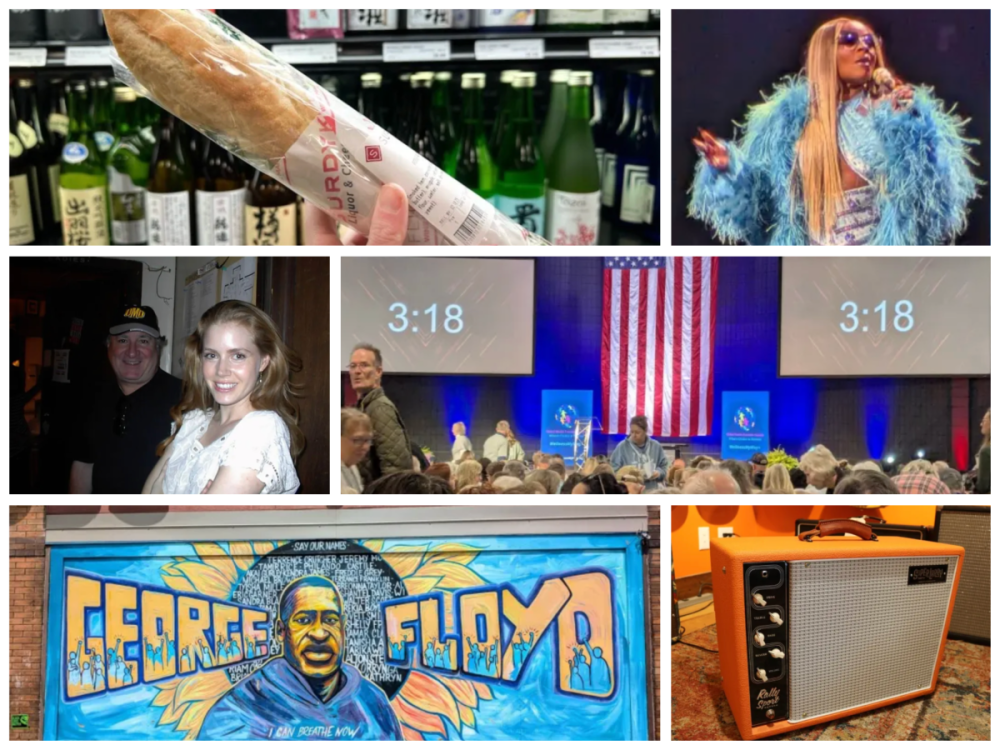Dyani White Hawk’s work is big and small, simple and complex, abstract and personal. It’s precise paint. It’s beads and rhinestones. It’s infinite. It’s love.
You can feel that love at a new exhibition at the Walker Art Center covering 15 years of the Minneapolis-based, Sičáŋǧu Lakota artist’s work. The show, aptly named “Love Language,” is organized into four mostly chronological sections—See, Nurture, Honor, and Celebrate—taking guests through White Hawk’s early oil paintings, which recreate intricate bead- and quillwork, to more recent beaded monoliths made with the help of others. Along the way there are collages, opportunities to touch materials, huge sculptures, and video installations featuring native languages and experiences.
“The exhibition and the artwork is meant to be an offering, to nurture people,” White Hawk explained at a preview event the day before the show’s opening. “And my goal is always that if you feel moved by the work, if you feel physically impacted by the work, hopefully that will inspire you to stay a little bit longer and think about the deeper conversations that exist within the work.”
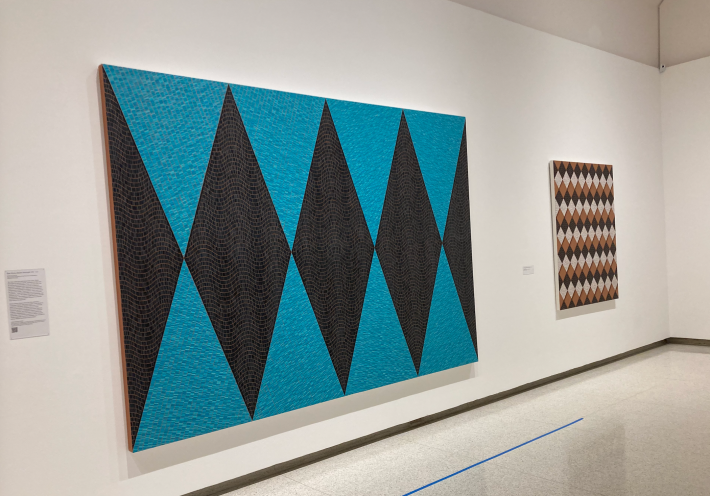
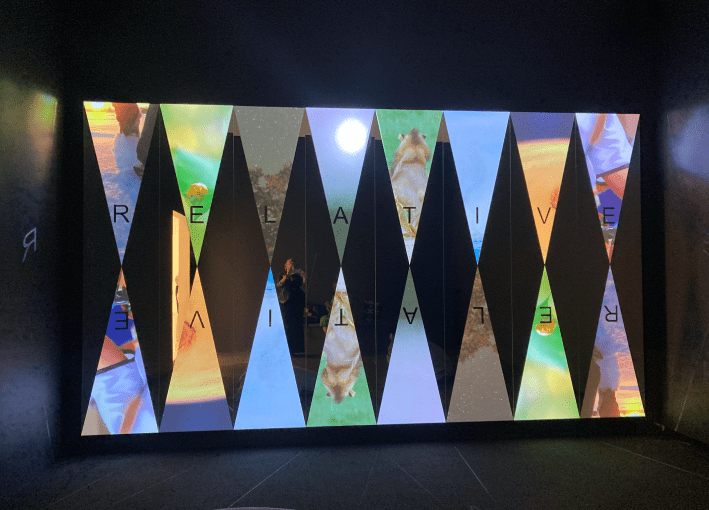
On the surface, the exhibition, which features over 100 pieces, is simply beautiful. Glass beads and tiles glitter and twinkle as large swaths of colors invite you further in. But as White Hawk suggests, there’s method, meaning, and even moments of re-education in these treasures.
For example, White Hawk’s Untitled (Quiet Strength) series features wide expanses of shimmering waves of color. Step closer and you will see that each work is composed of thousands (possibly millions?) of tiny brush strokes meant to imitate quillwork. It’s a gentle reminder that abstract art existed long before Rothko or Mondrian, and continues anew today.
As White Hawk noted in a 2023 MPR interview, “Abstraction is a human practice, and abstraction was being practiced here, by my ancestors and by other Indigenous women, and other Indigenous artists, well before these lands were colonized.”
Pieces like these can take three to six months to complete, and at the preview one artgoer commented that a project like that would drive them mad. But I found myself soothed by the idea of the repetition and care that must have gone into the process, like cross stitching or knitting—there’s that sense of love again.
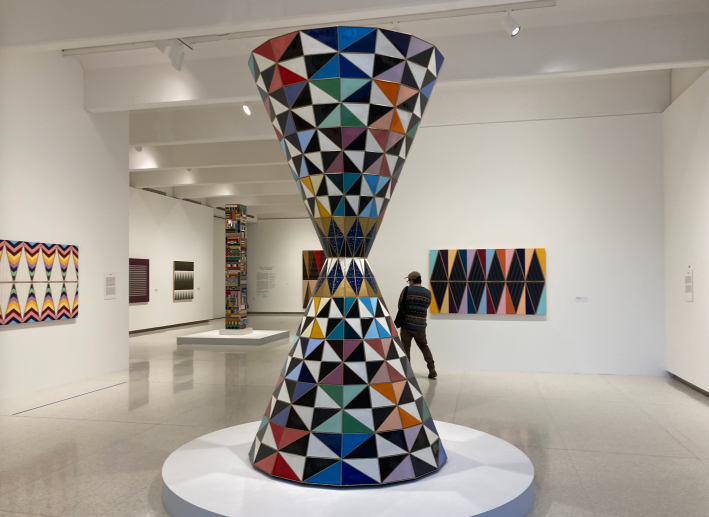
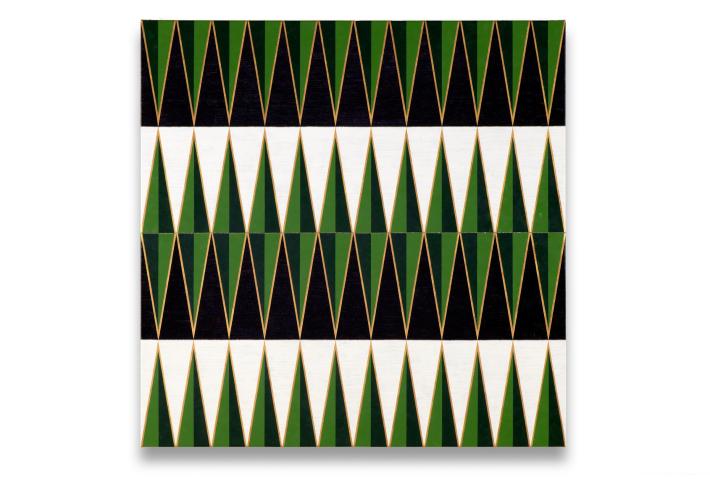
Kapemni, a Lakota and Dakota symbol of two triangles meeting, is a common theme throughout White Hawk’s collection. Much like a figure eight, it represents infinity, but also the meeting of sky and earth, above and below. Infinite We, a huge kapemni made of enamel, copper, and brass, brings the shape into the 3-D while paintings like Dance With Me and grassesgrassesgrasses play off that infiniteness with motifs that sparkle with rhinestones.
Perhaps the most striking pieces in the show (and there are many!) are the two 10-foot-tall monoliths, Visiting I and Visiting II. Both are glimmering paeans to community, care, and collaboration. For each piece, contributors beaded designs to be added to the sculpture, like a patchwork quilt, telling a story of many and one. It’s a humbling work that is a joy to take in and study from different angles.
“Soothing” might be a weird word to describe an art show, especially one at a modern art museum, where discomfort is king, but “Love Language” truly is an inviting hug, right down to the low-lit video rooms featuring couches strewn with White Hawk-designed Faribault Woolen Mills pillows and blankets (ASMR-loving folks may want to check out the hairbraiding video).
“We're working really hard to make sure that the Native community here feels damn good when they walk through these exhibition halls,” said White Hawk at the reception, “and if they do, that means it will feel good for every single person that partakes in this space, and that's what it's meant to do.”
"Dyani White Hawk: Love Language"
Where: Walker Art Center, 725 Vineland Place, Minneapolis
When: Now through February 15, 2026
Tickets: Free with admission ($18 general; free for citizens and members of Tribal Nations)
